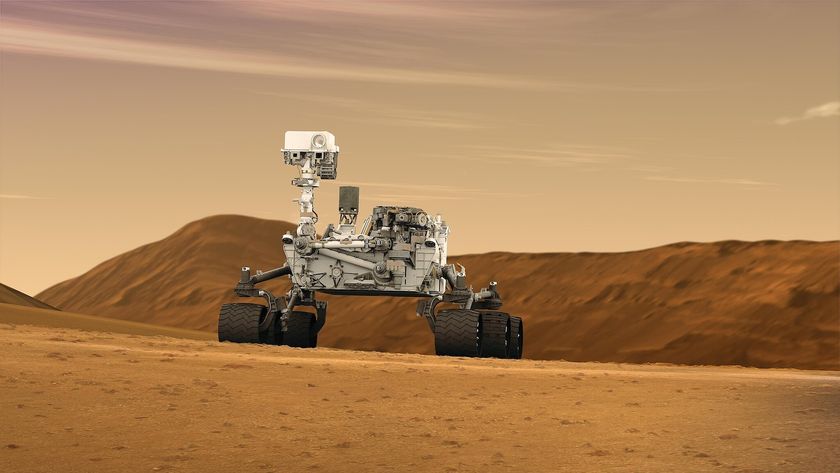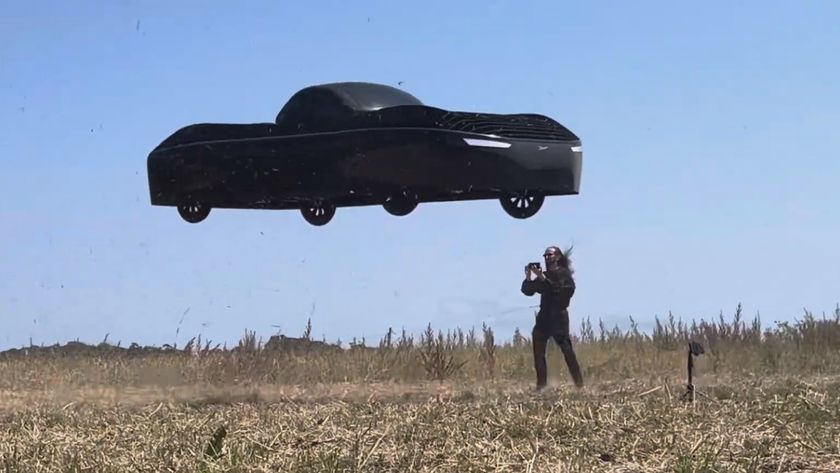Fighter Jets May Launch Small Satellites to Space
Small satellites could hitch rides to space on an F-15 fighter jet by next year, according to the Defense Advanced Research Projects Agency (DARPA), the agency responsible for developing new technologies for the U.S. military.
DARPA's so-called Airborne Launch Assist Space Access (ALASA) program is an ambitious project that aims to launch small satellites more quickly, and reduce the cost of lofting them into orbit. Traditional launches using rockets cost roughly $30,000 per pound ($66,000 per kilogram), DARPA officials have said.
The F-15 jet would take off on a nearly vertical trajectory, with the expendable launch vehicle mounted underneath it. Essentially, the fighter jet acts as the first stage of a rocket, according to DARPA. After the aircraft flies to a high altitude, it releases the satellite and can then return to land on a conventional runway.
ALASA flight demonstrations are expected to begin later this year, and the first orbital test launch is slated to occur in the first half of 2016. A dozen other demonstration launches are also planned for next year, according to agency officials, who declined to comment on the ALASA program in an interview with Live Science.
"We've made good progress so far toward ALASA's ambitious goal of propelling 100-lb. [45 kg] satellites into low-Earth orbit (LEO) within 24 hours of call-up, all for less than $1 million per launch," Bradford Tousley, director of DARPA's tactical technology office, said in a statement.
"We're moving ahead with rigorous testing of new technologies that we hope one day could enable revolutionary satellite launch systems that provide more affordable, routine and reliable access to space," Tousley said.
A public update on the ALASA program took place earlier this month at the Federal Aviation Administration's 18th annual Commercial Space Transportation Conference in Washington, D.C.
Sign up for the Live Science daily newsletter now
Get the world’s most fascinating discoveries delivered straight to your inbox.
The new system is designed to be "an alternative to ride-sharing for satellites," which is when a small satellite hitches a ride into space on a rocket whose primary purpose is to boost a bigger satellite, according to TechieNews.
The system "enables satellite owners to launch payloads from any location, any schedule into orbits of their choice, on a launch vehicle designed specifically for small payloads," Mitchell Burnside Clapp, DARPA module manager for ALASA, told TechieNews.
The system designs were narrowed down to three in the first phase of the project, but the agency is planning more maneuvers to reduce the cost as much as possible. These methods include using conventional runways to launch and land the missions, and developing "a new high-energy monopropellant" that combines rocket fuel and oxidizer into one liquid.
Other cost-saving measures for ALASA include mission-planning software to streamline launches, a system to watch over the vehicle using satellites and an automatic flight-termination system that could stop the flight if safety were at risk.
In March, Boeing was selected as the prime contractor for the second phase of the ALASA program.
Follow Elizabeth Howell @howellspace, or Live Science on Twitter @livescience. We're also on Facebook & Google+. Original article on Live Science.

Elizabeth Howell was staff reporter at Space.com between 2022 and 2024 and a regular contributor to Live Science and Space.com between 2012 and 2022. Elizabeth's reporting includes multiple exclusives with the White House, speaking several times with the International Space Station, witnessing five human spaceflight launches on two continents, flying parabolic, working inside a spacesuit, and participating in a simulated Mars mission. Her latest book, "Why Am I Taller?" (ECW Press, 2022) is co-written with astronaut Dave Williams.











